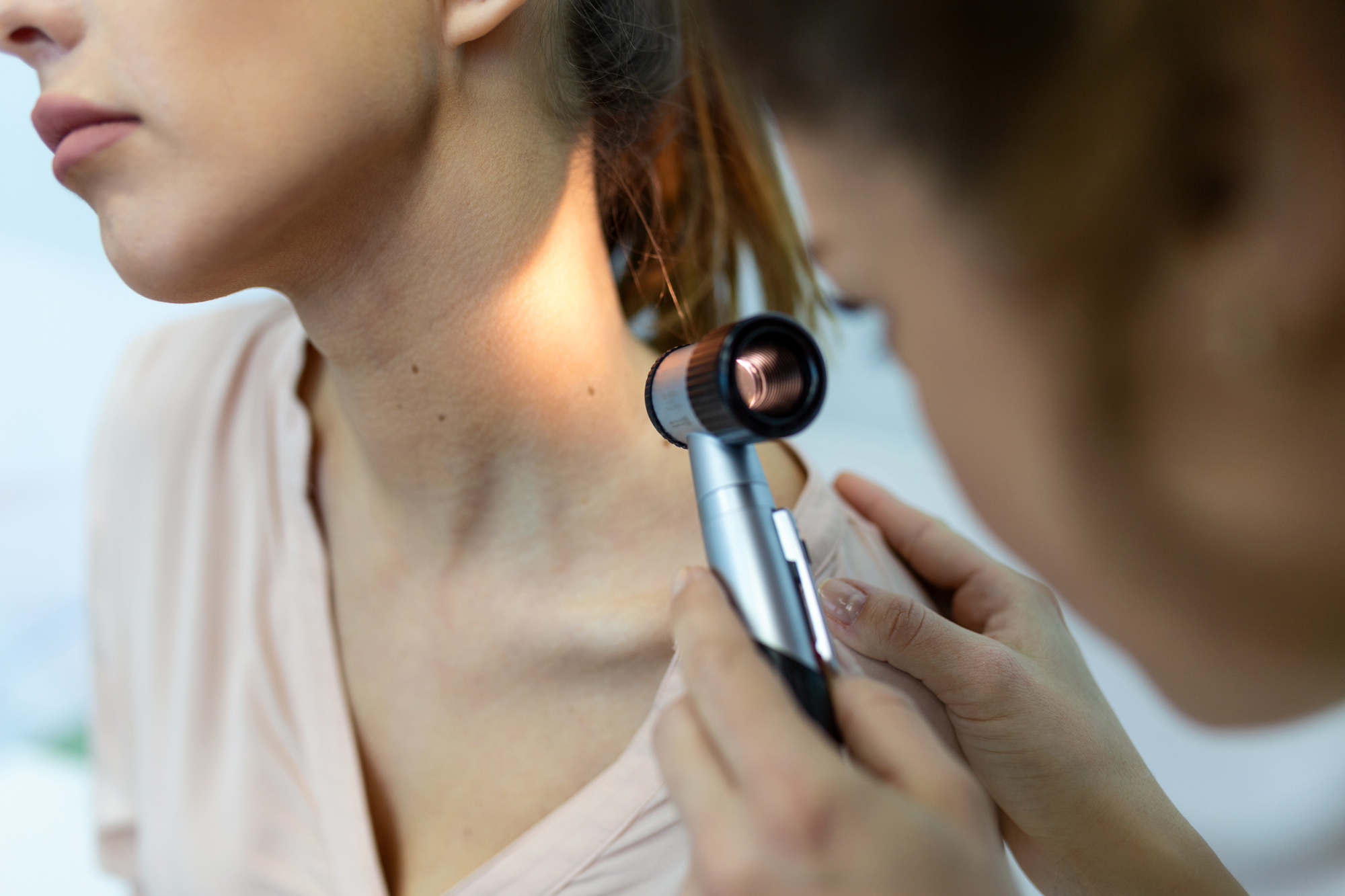Moles seem to be everywhere in the summer – not the burrowing critters, which prefer spring and fall, but those growths on our skin.
“Moles are often noticed more in the summertime because more of our skin is exposed, as compared to colder months,” Dr. Bridget Bryer, a UVA Health dermatologist, said. “But sunlight does play a role in the formation of moles.”
They may make solo appearances, or congregate. They may lie down flat, or be round and raised. They may vary in color, too, from fair-skin tone to brown or black.
Given all the ways they may look unusual to you, and the connection with UV light, it’s only natural to wonder if your moles are something you should worry about.
While Bryer stressed that most moles are harmless, some can be a signal that something is wrong. She answered UVA Today’s questions about what to look out for.
Q. Why do our bodies form moles?
A. A mole, also referred to as a nevus (multiple moles are referred to as nevi), is a benign growth of melanocytes. Melanocytes are the cells found in our skin that produce pigment. When a cluster of melanocytes forms, it shows up on our body as a mole.
The number of moles that a person has is influenced by genetic traits, skin type and childhood sun exposure, as well as a history of immunosuppression or other rare skin conditions.
Q. What part does UV light play in their progression?
A. The number of moles that a person has is influenced by many factors. Your genes are likely the most important factor in the number of moles that you have. People with fairer skin tend to have more moles as well.

Dr. Bridget Bryer has provided dermatological care to both children and adults. (UVA Health photo)
Childhood sun exposure, especially intermittent periods of intense sun exposure, is known to increase the number of moles that a person develops.
Q. How often do moles become cancerous?
A. Most moles do not become cancerous. In fact, most melanomas do not develop from existing moles, but start off as melanomas. This is why it is important to notice new moles, especially when you are over 35 years old, as most moles are acquired during childhood to early adulthood.
People who have many moles, or many irregular moles, are more likely to develop skin cancer. If you have a family history of melanoma in a first-degree relative less than 40 years old, it may be beneficial to have a baseline screening exam.
Q. Does the ABCDE chart apply to moles?
A. The ABCDE chart is very useful in helping people recognize when a mole should be checked by a doctor.
“A” stands for “asymmetry.” If you draw a line down the middle and the mole looks different on either side, then that mole should be one to watch.
“B” is for border. Irregular edges are important to monitor.
“C” is for “color.” Moles that are different colors (tan, brown, pink) should be watched more closely, as well as moles that develop a new color within them.
“D” is for “diameter.” Moles that are larger than a pencil eraser (about 6 mm) may be more likely to become cancerous, but any mole that is changing, regardless of size, should be checked.
And “E” is for “evolution.” I think that this criteria is the most important. Moles that are evolving or changing in any of the above traits (asymmetry, border, color, size or symptoms) are the most important ones to have checked by your doctor.
Q. What is often the first sign of a problem?
A. Often, it is a color change or size that is noticed first. Most melanomas start as flat moles. There is often a misconception that raised moles are more worrisome.
Q. What should you do if you spot an irregularity?
A. See your primary care doctor, who can recommend referral to a dermatologist if needed. If you have a dermatologist, call to get an appointment. Taking a picture of a mole that you are worried about can also be helpful to track any changes.
Q. What if your doctor recommends a specialist with a long wait time?
A. Dermatology is traditionally an underserved specialty, so wait times can be long. Having your primary care doctor send in an expedited referral can help move up your appointment. In addition, calling an office for cancellations may get you in earlier.
At UVA Dermatology, we serve patients at four locations and have started an access clinic to get patients who are worried about a specific spot in as soon as possible. We know that if skin cancer is caught early, it is easily treated, and we are doing our best to serve the needs of our community.
We also offer free skin cancer screenings every May.
Q. Is there anything else readers should know?
A. You can develop skin cancer even on areas not exposed to sunlight. These areas include the back of the eye, under your nails and in the genital area. It is important to pay attention to any changing mole, even if it is not in an area of sun exposure.
Media Contact
Communications Manager School of Engineering and Applied Science
williamson@virginia.edu (434) 924-1321
Article Information
August 8, 2025






